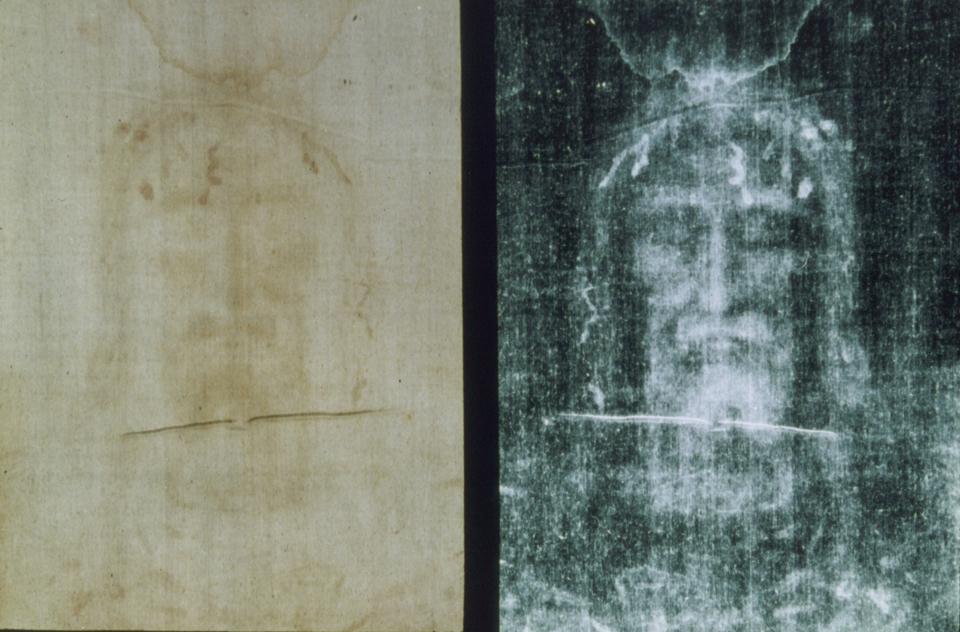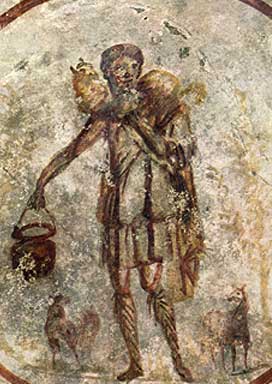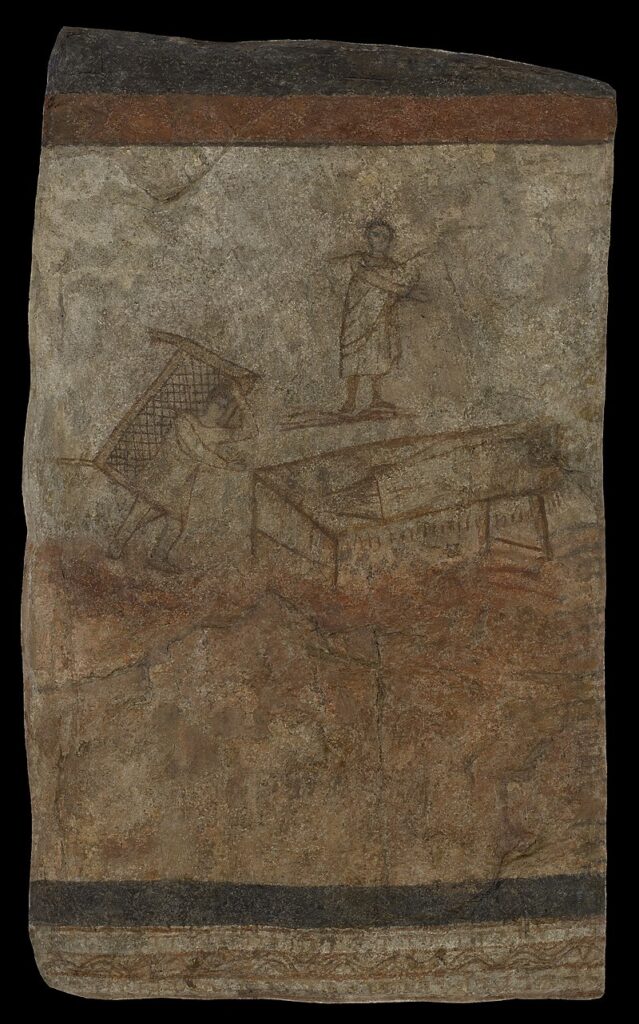



“An English couple went to Puttaparthi (Sai Baba’s place of residence in India). The husband had faith in Baba but the wife believed in Jesus Christ. Baba called them in for an interview. The husband had an automatic camera which started clicking by itself during the interview. When the couple went back to England and had the film developed, they got this picture of the face of Jesus.
On their next journey to Puttaparthi, Baba called them in for another interview and asked them whether they liked the picture. He then told them that this was a picture of Jesus Christ at the age of 28 or 29 when he left India to return to Jerusalem.”
From Sathya Sai Baba and Jesus Christ by Peter Phipps ~ This picture of Jesus was created by Sathya Sai Baba just before Christmas 1984. After first being given to an Argentinian, Sai Baba then donated one to Venezuela during the Christmas celebrations of 1987. He also allowed six copies to be made, which He then blessed and donated to various Countries around the world: Spain, Denmark, England, New Zealand, Mexico and Argentina. He also donated some small copies to Italy to be given to devotees. Baba said that this was a true likeness of Jesus and that He was 29 years old in that photo. Many ‘second-generation’ photos have been made from the first ones.
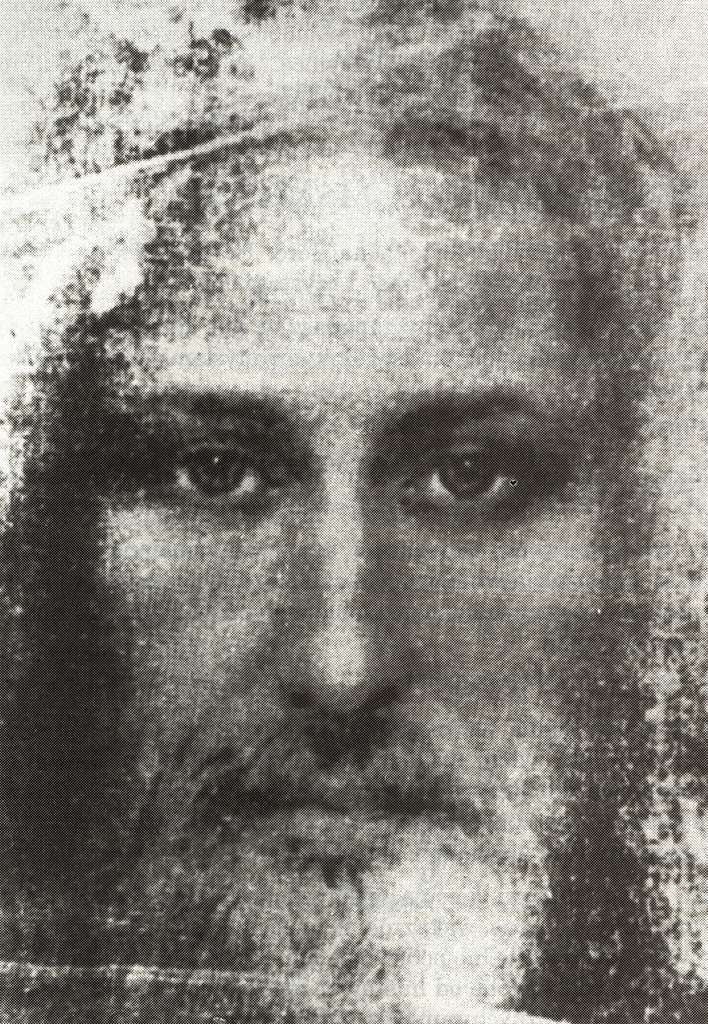
From Sathya Sai Baba and Jesus Christ by Peter Phipps ~ The image of Christ from the Shroud materialised by Baba : Two ladies sat in Darshan. One, a devout Christian, had a black-and-white computer print-out of the face of Christ from the imprint on the Shroud of Turin, and she held it out for Sai Baba to bless. Baba circled His hand above it and the picture completely disappeared, leaving only a blank piece of paper. Then he passed His hand over it again, and this picture appeared, – now in colour.

From https://www.flickr.com/photos/arjuna/166346784 ~ After the bhajans there was a guest speaker from England, Dr Carol Bruce Llam. She had some photos with her, pictures of the Master Jesus. These striking and unusual prints captured my attention, since I am a Christian, Jesus occupies a special place in my heart. I felt as if Sai Baba was making me really feel at home on my first visit.
Carol Bruce related an intriguing story about the source of these photos: A Christian devotee of Sai Baba went to India seeking His blessings.. During Darshan she held in her right palm a rosary with a crucifix and in her left a print of picture taken from an NASA computerised photograph (1978) depicting the face appearing on the Shroud of Turin. Baba brushed aside the Llama crucifix and said to her, “why do you worship a suffering Christ?” wouldn’t you prefer to worship the risen and glorified Christ?” The devotee totally amazed and speechless could only shake her head energetically several times in the affirmative.
Sai Baba waved his hand over the NASA computer print and the print became blank and enlarged in size, He waved His hand again over the now blank print and as if in a dark room observing a photograph coming to life or similarly seeing a polaroid developing, what occurred defied all known scientific and material laws. Before the eyes of the astonished devotee, Sai Baba formed the image of Jesus the Christ after the resurrection. Some students who have obtained copies of this photograph have indicated that it generates powerful beneficial energies in the environment in which it is placed.
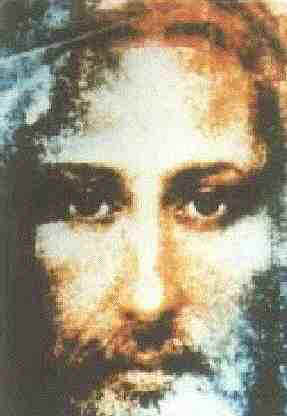

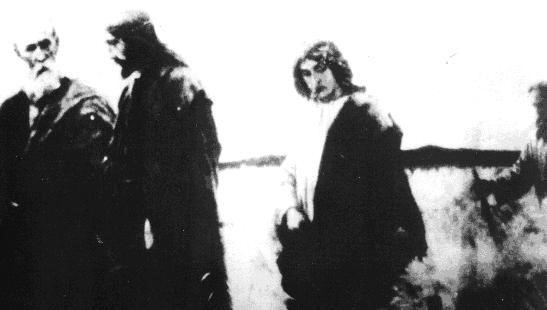
Another source claims that the image was taken in 1967 by a woman near the Sea of Galilee, this photo was revealed when she had the film developed. Apparently shows (From left to right) Joseph of Arimathea (Jesus’s maternal uncle) Immanuel Ben-Joseph (Jesus Christ), his younger brother James and Simon Peter. The photo captures the moment when Jesus made the decision to return to Jerusalem, this explains the look of sorrow on the faces of Joseph and James. They knew that if Jesus returned to Jerusalem, he would be killed.
Jesus wears a strap at the back of his head, not a headband, speculation is that it is some kind of metallic diadem surrounded by a small leather cord which Jesus wore at the back of his head when it was windy. A diadem is a type of crown, specifically an ornamental headband worn by monarchs and others as a badge of royalty.
Analysis of the photo and the painting by Johannes Raphael Wehle https://www.spiritdaily.org/Mailbagpainting.htm

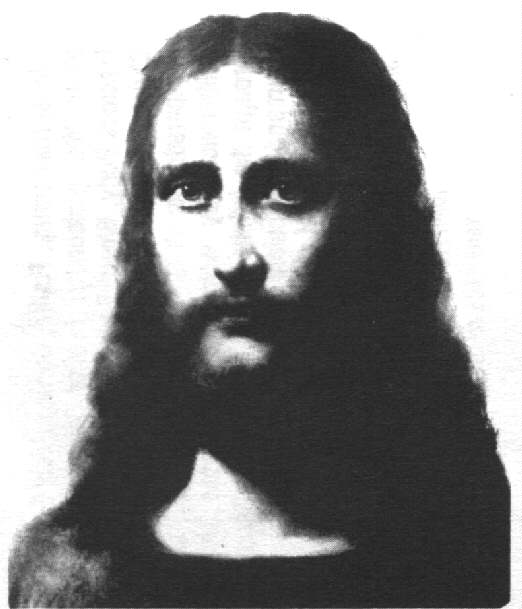

Jesus permitted Sister Anna to take His photograph on various occasions of His appearance, and in subsequent revelations gave reasons for making Himself visible now in our time.
“Listen to me. I am above this earth. I allow myself to be seen after many warnings.”
“I make myself visible in order to bring back souls.”
“I love mankind and I make myself visible in order to give my warnings of mercy.”
“Many do not listen to me because they do not believe in my reality.”
The cause for Sister Anna Ali’s canonisation has now been opened.
At the residence of Archbishop Emmanuel Milingo in early August 1987 Jesus appeared to a Kenyan woman (Anna Ali), now a professed sister of the Pious Union of Daughters of Jesus, the Good Shepherd, a Union founded by Archbishop Milingo whose Ministry of Healing has brought manifold blessings to the great Italian people and to Christian Europe at large.
Jesus continued to appear to Sister Anna Ali since His initial appearance in August 1987. During His appearances, He shares with Sr. Anna His anguish today, and requests prayers and atonement for the sins of His beloved priests and those consecrated to Him. On the feast of Corpus Christi, 1988, He came to Sr. Anna Ali in tears of blood. According to Sister Anna, Jesus “came with His own light. He was enveloped in light, which was of the same hue of the sky when it is deeply blue. His presence illuminated the whole room. He wore a red tunic (the colour of blood), with wide sleeves. He has shining dark hair. He gave me a message and on His instruction I started writing down the messages… The first message was written on 8 September, 1987”
On April 4, 1991, in Sister Anna’s convent in Zagarolo (Rome), Jesus dictated the following prayer to the young visionary:
Oh Jesus, most humble, adorable, present in the Blessed Sacrament of your Divine Love. Here on your concealed Sacred throne, I prostrate my soul and whole self before you. Out of my nothingness and sins, I implore you to accept my poor prayers, acts of reparation and adoration to quench your thirst for souls and obtain full pardon for the many profanations, ungratefulness and outrages which you receive each and every moment from the countless number of us miserable sinners. It was your everlasting Mercy towards mankind that moved you so deeply to the point of veiling yourself to remain in love on our altars and Tabernacles all over the earth.
Oh Jesus, by your Soul, Body and Divinity, present in the most Holy Eucharist, accept the tears of my soul that these very precious souls to you (mention here the names of those you wish to pray for) may not lose their Eternity forever. The everlasting ages belong to You. So we entrust our total selves in Your loving care and gaze, now in life and death. Amen.
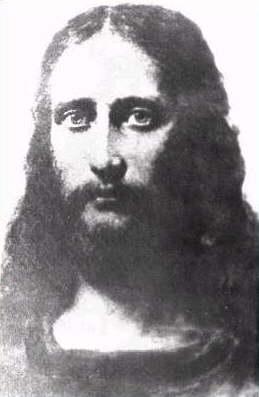
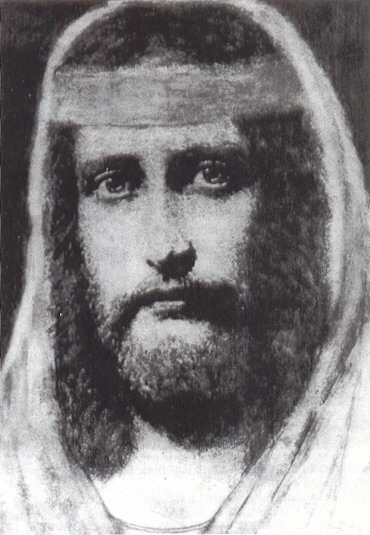

From deepertruthcatholics.com ~ This photo took place as a result of a miracle of the Eucharist.It was during the Spanish Civil War (1936-1939) when havoc hit Spain, looters took to the streets stealing what was thought to be worth money. Unfortunately, the Churches were broken into, so, when a priest safeguarded a ciborium containing the Consecrated Hosts by taking it home, he took a picture of it and this picture of Jesus materialised on the photo.
The Valencia Chalice : Of the existing chalices, only the Santo Càliz de Valencia (Holy Chalice of the Cathedral of Valencia) is recognised as a ‘historical relic’ by the Vatican, although not as the actual chalice used at the Last Supper. Although both Pope John Paul II and Pope Benedict XVI have venerated this chalice at the Cathedral of Valencia, neither has formally pronounced it as authentic, however the chalice is authenticated by a certificate said to date from 262 AD.
In the beginning of the Spanish Civil War (1936-1939), a raging mob had stormed into a monastery of monks, destroying and burning archives, libraries, murals and other very valuable masterpieces. One July morning a mob gathered in the area surrounding the Cathedral of Valencia. The priests in charge of the holy grail’s custody were terrified that the people were going to destroy it. A parishioner, a young pious Doña María Sabina Suey was entrusted with taking the grail out of the cathedral. Wrapped with silk and camouflaged with newspapers, she carried it through the mob towards her home in de la calle Avellanas, 3-30. Three hours later the Marxists entered the Cathedral, burning pews, confessionals, doors, the tabernacle and destroyed paintings, jewellery, relics and a 16th century Valencian tapestry.
One of them specifically looking for the Holy Grail (Santo Caliz) was astonished by its absence, but left the devastated cathedral without mentioning it to the others, as they were unaware of its existence. He continued with his search and eventually after the interrogation of many people, he ordered the search of Elias Olmos’ home and all of the homes of his friend’s. Don Elias Olmos Canalda (Archivist Canon of the Cathedral) and Jose Folch (sacristan) were the architects of the plan to secretly remove the Grail from the cathedral. Among those who had their houses searched was the Suey family, the guardians of the Grail. The Grail was not in a good hiding place, placed in a draw of a wardrobe, but incredulously the Rojos (Marxists) didn’t execute an exhaustive search that day and left, making the promise to come back another day.
Three weeks later the armed Rojos returned to the Suey home to undertake a more meticulous search. The Grail was now in a cavity, covered with a floorboard, underneath the wardrobe.
The Rojos considered Elias Olmos to be responsible for the Grail’s disappearance, as he had remained hidden during the whole period of conflict. The Rojos continued to interrogate and torture his friends in order to locate him.
Doña María Sabina Suey, trying to find a safer place to live, moved with the Grail to her brother’s home, at number 7 Pelayo Road. The Santo Caliz was then hidden inside a couch. During the time, she was there the Rojos came twice, unsuccessfully looking for the Holy Grail. She then opted to return her home carrying the Santo Caliz, this time hiding the Grail in a hole under the kitchen sink covering it with a tiled wall. Over the next few months nobody appeared to search the Grail. Then in June 1937 the Grail was moved to Carlet, a little village 25 km from Valencia, to another family member’s home. There the Grail was hidden in a similar hiding place, a hole inside a tiled wall.
The Grail remained in Carlet for 22 months. The war ended in Valencia in March 1939 with the withdrawal of the Rojos. The next day Maria Sabina Suey presented the Grail to authorities. The cup returned to the Cathedral of Valencia (Plaça de l’Almoina, 46003 València, Spain) in 1939 coinciding with the end of the war where it remains to this day. When Pope John Paul II visited Valencia on 8 November 1982, he kissed the cup and then used it to celebrate Holy Mass.
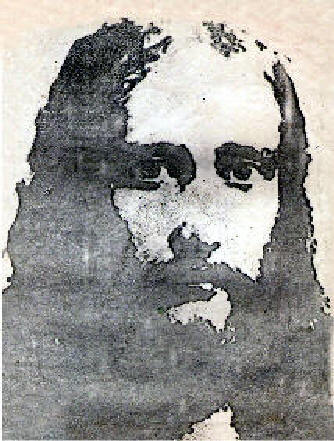
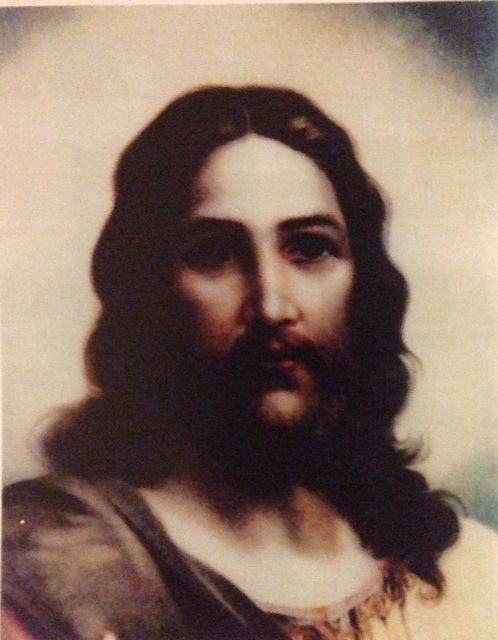
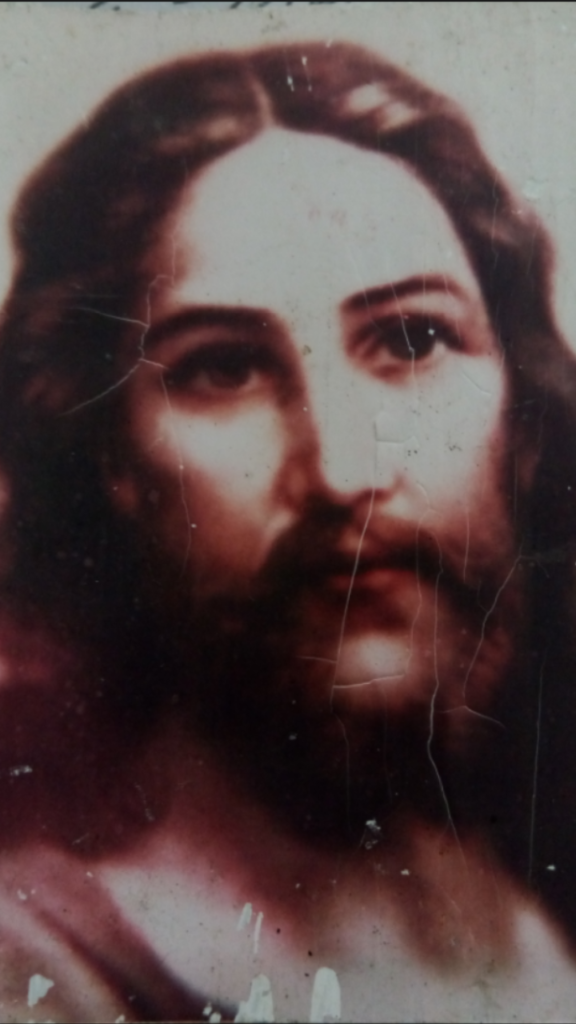

From angelfire.com ~ In 1972, my Grandmothers friends Mother was traveling by plane over Jacksonville, Florida. During the flight, a severe thunderstorm was taking place and she decided to take a few pictures of the lightening outside of the airplane window. Aside from the lightening, she hadn’t seen anything too unusual. Later, when she got the pictures developed, she was amazed by what she saw. Fortunately, she made a copy of one of the pictures and shared it with my Grandmother. Shortly after, my Grandmother showed the picture to my parents and I began showing it to all of my friends in school. Everyone who saw the picture was in awe of it and it soon became known as “The Jesus Picture.” For nearly 30 years it has been in my possession locked away in a safe. I often wondered what God had planned for the picture and I couldn’t help but wonder why I was the one who had it. Now, that I have discovered the Internet and have put together a website, it seemed like the perfect opportunity for me to share it with others. Most people who have seen this picture can easily make out the robed figure. If you take a closer look, you will notice the face, eyes and hands as well.
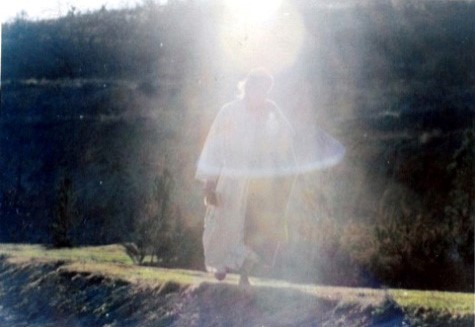
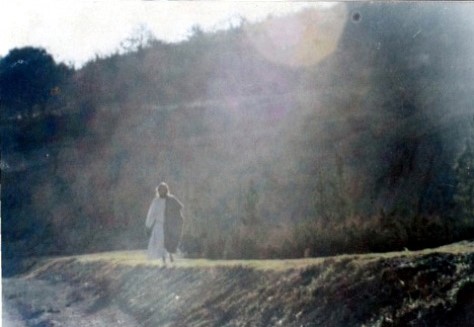

Mary N. writes ~ One of the posts on my blog that people seem most interested in is the miraculous picture of Jesus I posted. It gets numerous views every single day. Recently, at Mass, I ran into the friend who gave me this picture and she gave me more information on it. Plus, yesterday, I found the printed page she had given me years ago which explains the circumstances behind the photo.
Luisa Piccaretta was a Catholic mystic and you can read more about the Cause of the Beatification of Luisa Piccarretta at http://www.padrebucci.com/id4.html, along with other information about Luisa, including her connection with St. Padre Pio (no, I can’t remove the Padre part…lol). Thanks to my friend, who painstakingly translated much of Luisa’s writing, I have had the opportunity to read quite a bit about “The Little Daughter of the Divine Will.”
The picture was taken during a retreat on living in the Divine Will. Here is the story behind the photo:
At the end of three days of talks about the Divine Will, given by Fr. Gustavo (who has a number of her original writings) in Leon Guananjuato, Mexico, in closing, he celebrated the Holy Mass on May 25th, 1998 to thank the Divine Volition. After Holy Communion, the new children of the Divine Will pronounced their solemn consecration (their promise to live in the Divine Will of God).
One of the sisters was taking photographs. When she received her developed photographs she discovered what you now see, sharp and clear, without any touch up, of the photograph of Jesus, which shows Him with a beautiful smile.
“I am the Divine Teacher, the Teacher of the Divine Will, and the souls who live in my Volition are my SMILE.” (A locution received by the person who took the photo.)
If you carefully observe the region of Jesus’ chest, you will see the silhouette of Fr. Gustavo, dressed with the priestly vestments when celebrating the Holy Mass, when he was raising his arms in the moment of the elevation of the Most Holy Sacrament at the Consecration.
My friend also left me another “explanation” of this picture – “this is from Vol 12, Jan 7, 1921”
“My beloved daughter, after the great sorrow which creatures are giving Me in these sad times, to the extent of making Me cry – and because this is the crying of God, it resounds in Heaven and on earth – a smile will take over, which will fill Heaven and earth with gladness. This smile will arise on my lips when I see the first fruits – the children of my Will – living not in the human sphere, but in the divine sphere.”
Interesting. We all know it’s about living in the Divine Will. This was the purpose of our creation. I’ll more than likely post about this again at a future date. There has been a lot of controversy surrounding Luisa Piccarreta and some poor translations of her works over the years. Hopefully, in time, we will come to a better understanding of Luisa’s life and “mission” here on earth.
(The photo looks like Robert Powell in the 1977 British-Italian epic film and television drama serial Jesus of Nazareth directed by Franco Zeffirelli.)

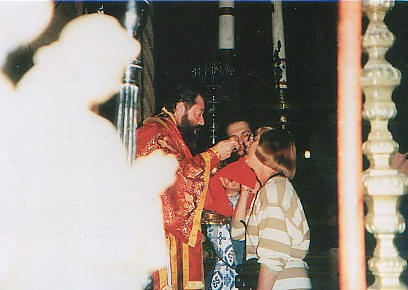

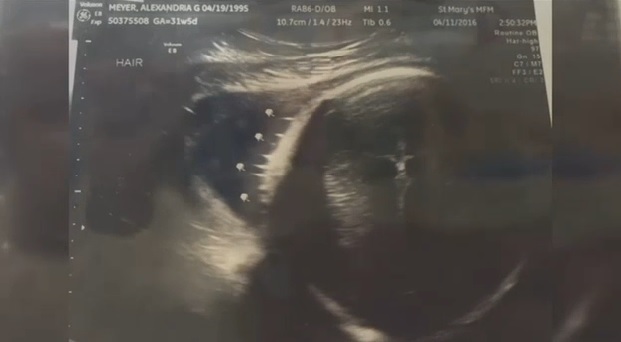
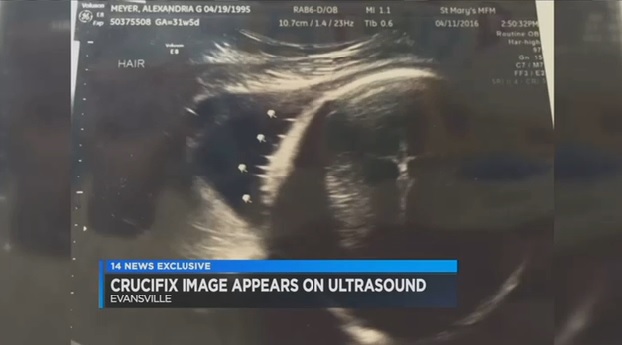

April 20, 2016 Reported [here]. Divine image appears in mom-to-be’s ultrasound picture. An Indiana woman’s prenatal checkup turned out to be a divine experience. Aley Meyer’s ultrasound photo showed not only her baby boy, but also an image of what appears to be Jesus on the cross. “We took a picture of it and blew it up on my phone to get a closer look and it is so much detail,” she told WFIE-TV. “You can see the hair and his legs crossed and everything.
The Evansville mom-to-be did not even notice the cross-like figure at first, but once her mother shared the ultrasound photo on Facebook, the comments went crazy. Baby Easton is due in June and Meyer finds it to be a sign that all will be right with the birth. Aley Meyer and fiancé Devan Blaze are expecting a baby boy in June. “I’ve been on a lot of medicine for my Chron’s Disease and I’ve been very worried about it so I feel like it’s a sign that everything’s going to be OK with him,” she added. Meyer’s grandmother also purchased a crucifix to hang in the little boy’s nursery following the divine surprise.


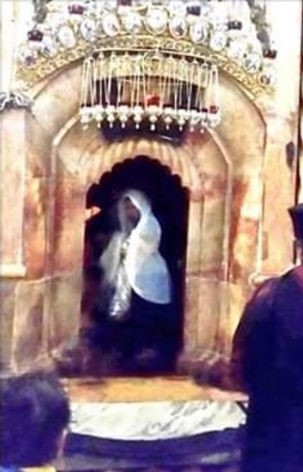
A group of pilgrims (including Fr. Calloway and Jim Caviezel) went with [206 Tours] to the Holy Land. On May 4, 2019, the large group of pilgrims made the Stations of the Cross very early and arrived at the Holy Sepulchre (tomb of Jesus Christ) a little after 6 am. Before the doors to the Holy Sepulchre were open for the priests to enter and celebrate the Holy Sacrifice of the Mass, one of the pilgrims took a photo of the front of the tomb. The doors to the tomb were shut. Father Calloway was standing very close to the photographer who took the pic and testifies that the doors were shut. The center photo what everyone was seeing that morning (the closed doors to the tomb). The top photo is what came out in one of the photos taken that morning. The lower photo is an enhanced view of the miraculous photo. Reported [here] from [here].
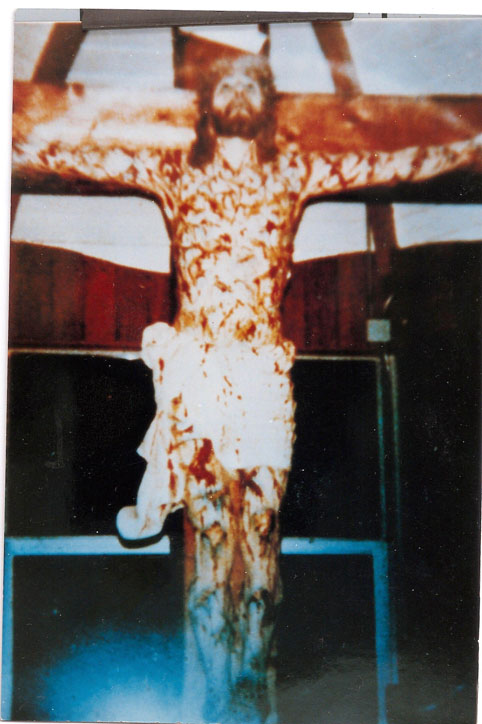
Paintings by Luke
The true likeness of Mary is thought to have been captured by Luke in his many paintings of her. The early Christian church fathers say that Saint Luke the Evangelist was the author of the Gospel according to Luke and the book of Acts of the Apostles in the new testament. Born in Antioch and a physician by profession, while in Jerusalem he met with Jesus.
With Cleopas, he saw the resurrected Jesus on the road to Emmaus (Luke 24). Luke returned to Antioch and become a disciple of the apostle Paul and later in 51 AD joined him in Troas, the city from where Paul first set sail, and followed and worked with him until his martyrdom. Afterwards it is unclear if Luke preached in Greece or in Gaul and there is also uncertainty surrounding his death. Though some historians claim that St. Luke was martyred, tortured and hanged from an olive tree in Thebes after the death of Saint Paul, others say he lived a long life, dying at the age of 84 in Thebes after settling in Greece to write his gospel.
Other reports following the martyrdom of Paul, tell of Luke preaching the Gospel throughout Italy, Dalmatia, Macedonia and other nearby regions and in his old age he visits Libya and Upper Egypt and from there returning to Greece, where he continued to preach. He served the Lord continuously, remained unmarried and without children until his death. Roman Martyrology places Luke in Bithynia at his death, however, Eastern tradition holds that Luke died in Thebes. The tomb of St. Luke exists to this day in the city of Thebes in Northern Greece (GPS 38.315083, 23.323557 Oplarchigou Vogkli, Thiva 32200, Greece), where they continue to celebrate his memory. Every year his tomb gives off a miraculous liquid that performs many miracles, especially healing people with eye trouble.
The subsequent transfer of Luke’s remains from Thebes to Constantinople is well-documented, having taken place in 357 AD. Procopius of Caesarea and St. Jerome maintain that his remains were moved, along with those of the apostle St. Andrew, to the Church of the Holy Apostles in Constantinople. The church was rebuilt by Emperor Justinian in 537 after fire damage at which time he ordered a shrine to be erected around Luke’s tomb. There is some disagreement as to where his remains were taken next. Some state that his relics were transferred for safekeeping during the eighth century Iconoclastic period. At this time a priest named Urio fled Constantinople with the relics of St. Luke and St. Matthew and went to Padua, Italy. In 899 the city was sacked by the Magyars (Hungarians), and the body was taken into hiding once again, not surfacing until a leaden casket was discovered by the Benedictine monks of St. Justina in 1117. In 1313 the remains were placed in a marble sarcophagus, and in 1562 the sepulchre was put on permanent exhibition in the newly built Basilica of St. Justina, where it remains today.
Christian tradition says that he was the first icon painter as he painted pictures of the Virgin Mary and Child, he is the patron saint of physicians and artists. Many icons have been attributed to Saint Luke throughout the Orthodox world. Some of these include; Panagia ‘Megalospileotissa’ (or of the Great Cave) near Achaia, Panagia Soumela in Beroia, Panagia Kykkotissa in Cyprus, Panagia of Agiassou, the Tikhvin icon of the Theotokos, Panagia Malevi and as many as seventy others, according to some sources. And regardless of whether it can be proven that Saint Luke painted them all, endless miracles of the Theotokos (a title of Mary, mother of Jesus, used especially in Eastern Christianity) continue to occur throughout the world through the holy icons. He wrote his Gospel in about the year 60.
Around the twelfth century one icon in particular came to be identified with Luke’s image, a half-length portrait of Mary holding the child and pointing toward him as the way of salvation. Known as the Hodegetria (she who points the way) the original icon was taken in the fifth century to Constantinople and installed in the Hodegon Monastery. It was said to produce miracles daily and became such a part of the city’s life that it was carried out of the church every Tuesday, so it could be seen by the public. The original Hodegetria seems to have vanished following the fall of Constantinople in 1453. Copies of the icon, however, could be found everywhere from Russia to Ethiopia and some six hundred were known to exist in Rome. Rome boasted that it had in its possession at least ten icons believed, like the Hodegetria, to have been painted by Saint Luke’s own hand.




The image was hidden during the destruction of Jerusalem in 70 AD and rediscovered in 326 AD by Helena and had a church built for it in Constantinople where it was venerated until the eighth century Iconoclastic period. One story claims that the wife of the emperor who ordered the painting burnt, hid it away and eventually taken to the forest of Belsk in Poland. When the icon was not safe there anymore an angel told the Prince of Belsk in a dream to take her to Czestochowa, where the monks of St. Paul of the Desert would guard it. In 1430 a band of thieves came to steal the rumoured treasure of the monastery, but finding only holy objects, they took them instead. When they placed the icon on their horse-drawn get away cart, the horses refused to move. Somehow the thieves realised that it was the Virgin Mothers doing and so in an angered response they slashed her face and threw it to the ground, breaking the icon in half. The monks found her the next morning, in the mud on the outskirts of town where a miraculous spring appeared. The monastery’s artists were unable to restore the painting and so was taken to the King’s court, however, his craftsmen were not able to complete the restoration either. It was eventually significantly repaired except for the facial scars, by other Western European specialists. The Black Madonna of Czestochowa became the symbol of Polish identity and independence and was declared Queen of Poland in 1656 by King John Casimir.

Tradition says the apostle Luke painted from memory, the image of Mary, mother of Jesus, that today hangs in the Byzantine Panagia Ekatontapiliani church, part of the complex located in the port town of Parikia, the capital of Paros, Greece. According to the legend, the original church was constructed by Saint Constantine. His mother Saint Helene had sought refuge from a storm here while on her journey to the Holy Land to search for the cross used in the crucifixion of Jesus. Near the port where she docked there was a small temple where she went inside to pray and promised the Virgin that if she were successful in her quest she would build a church on the site. This church was built by her son Constantine after her death and it was dedicated to the Assumption of the Virgin. The original church was constructed in 326. In the 6th century the Byzantine Emperor Justinian made reformations to the church and added a dome. More reformations were performed through centuries and today the church is a complex of Paleochristian, Byzantine and post-Byzantine elements. The most recent renovation was in 1962. The entire complex of Ekatontapiliani comprises the main church of Virgin Mary with the internal chapels of Agios Anargiros, Agios Philippos and Osia Theoktisti (who lived and died in the monastery in the 9th century). Outside the main church, there are the chapels of Agios Nikolaos, Agia Theodosia and Agios Dimitrios. In the yard of the monastery, there is also a baptistery and the cells for the monks.

Luke was also Paul’s companion and scribe during his trips around the Mediterranean. On his way to trial in Rome in the year 60, Paul was shipwrecked off the northwestern coast of Malta and had to spend the harsh winter months there. During his stay, he converted the island’s governor, Publius (Malta’s first bishop and first saint), thus establishing the very roots of Maltese Christianity. Luke tells the story (notice his chronicle is written in the first-person plural, “we”) as follows, in Acts 28:
Once safely on shore, we found out that the island was called Malta. The islanders showed us unusual kindness. They built a fire and welcomed us all because it was raining and cold. Paul gathered a pile of brushwood and, as he put it on the fire, a viper, driven out by the heat, fastened itself on his hand. When the islanders saw the snake hanging from his hand, they said to each other, “This man must be a murderer; for though he escaped from the sea, the goddess Justice has not allowed him to live.” But Paul shook the snake off into the fire and suffered no ill effects. The people expected him to swell up or suddenly fall dead; but after waiting a long time and seeing nothing unusual happen to him, they changed their minds and said he was a god.
There was an estate nearby that belonged to Publius, the chief official of the island. He welcomed us to his home and showed us generous hospitality for three days. His father was sick in bed, suffering from fever and dysentery. Paul went in to see him and, after prayer, placed his hands on him and healed him. When this had happened, the rest of the sick on the island came and were cured. They honoured us in many ways; and when we were ready to sail, they furnished us with the supplies we needed.
Images of Jesus
